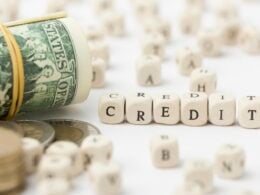The Senate approved an additional $60 billion in funding for the Economic Injury Disaster Loan (EIDL) program and $310 billion for Paycheck Program Protection (PPP) loans on April 21, 2020. It now heads to the House and then, hopefully, to the President’s desk. Small business owners who missed out on the first round of funding will be anxious to secure one or both of these loans this time around, and funds are expected to go quickly. Before you apply, here are three potential pitfalls that could cost you your COVID-19 small business loan.
StartupNation exclusive discounts and savings on Dell products and accessories: Learn more here
First, a quick recap of these two programs:
- Economic Injury Disaster Loans (EIDLs) provide a loan of up to $2 million at 3.75 percent (2.75 percent for non-profits). As part of EIDL, applicants can request an advance of up to $10,000 ($1,000 per employee) that does not have to be repaid.
- Paycheck Protection Program (PPP) loans provide a loan of 2.5 times average monthly payroll, up to $10 million. If loan proceeds are used properly (primarily for payroll) the loan may be fully forgiven before the business owner must make a single payment.
So, what might stop you from getting one of these loans?
Credit
SBA loans typically come with credit checks and certain credit requirements. After all, if these loans aren’t repaid, taxpayers will ultimately pick up the tab. So, it’s important to understand how credit will play a role in getting COVID relief loans.
EIDL
Disaster loans require acceptable credit, and that’s no different for EIDL loans due to coronavirus. A personal credit check will be required for all owners with at least 20 percent ownership, and a business credit check will be conducted for loan amounts above $200,000, except sole proprietors. There is no minimum personal credit score required, but credit problems may result in a rejection email.
EIDL loans also come with an advance (or grant) of up to $10,000 that doesn’t have to be repaid. The CARES Act specifically states that applicants who get the grant don’t have to repay it, even if they are turned down for the EIDL loan. That would seem to imply that credit would not be a hurdle to getting the grant, but at least one business owner who reached out to us has been rejected for both the grant and the loan based on credit.
PPP
Fortunately, the SBA appears to have waived any requirement that lenders check credit for PPP loans. Since these loans are designed to be forgiven if the funds are spent properly, there doesn’t seem to be a concern that some borrowers may not be able to repay any loan balance left after forgiveness.
However, you should note that if you, or any business owned or controlled by your co-owners, is delinquent or in default in the past seven years on a federally guaranteed loan, you likely won’t qualify. Note that federal loan defaults and delinquency may also jeopardize EIDL loans, however, you may be able to qualify in certain circumstances, including if you are on a payment plan to repay that debt.
Related: Resources for Small Business Aid Amidst the COVID-19 Crisis
Not knowing your numbers
While Congress has extended the time frame for filing 2019 tax returns, many business owners are learning they need the information from those returns in order to properly apply for one of these loans. If you haven’t kept up with your bookkeeping, now’s the time to get your records up-to-date.
EIDL
To apply for EIDL, you will need to know gross revenues and cost of goods sold for the 12 months prior to January 31, 2020 to complete the application. You may later be asked for tax returns or additional information. You don’t need to have completed your 2019 tax return, but you may have to provide an up-to-date profit and loss statement.
PPP
To determine your loan amount for PPP, you’ll need to know your business payroll costs for either the 12 months before you apply for your loan or all of 2019. That information will be used to calculate your maximum loan amount. The lender may also ask about rent, mortgage interest or utility expenses. Those don’t affect your loan amount but a portion (up to 25 percent of non-payroll costs) may be included in your calculation for forgiveness.
If you are self-employed and file Schedule C, you’ll use the amount from Line 31 (net profit) to determine how much you may qualify for under PPP. While the SBA says you don’t have to file your 2019 tax return to qualify for PPP, you must complete it in order to arrive at the proper loan amount.
Your background
A criminal record could prevent you from getting one of these loans so it’s important to understand these requirements.
EIDL
On the application, you will be asked if you or co-owners with 20 percent or more equity are facing pending criminal charges, have been arrested in the past six months, or have any history of a criminal offense other than a minor vehicle violation.
The SBA Standard Operating Procedures for Disaster Loans states: “We do not approve loans if the applicant or principal owner is presently on parole or probation following conviction of a serious criminal offense. However, the Office of Disaster Assistance will consider approving an application submitted by partnerships, corporations, and LLEs, where the apparent bar to eligibility was committed independently of any official act for the business and the individual will divest all direct and indirect interest in the business.”
PPP
You won’t be eligible for a PPP loan if you or any owner who owns 20 percent or more of the equity of the business is presently incarcerated, on probation, on parole; subject to an indictment, criminal information, arraignment, or other means by which formal criminal charges are brought in any jurisdiction; or have been convicted of a felony within the last five years.
Sign Up: Receive the StartupNation newsletter!
Take advantage of these programs
Both of these COVID relief loan programs may provide important financial assistance for small business owners whose businesses have been impacted by COVID-19. It’s even possible to obtain funding through both programs, as long as funds are not used for the same purposes. If you believe you may qualify, make sure you apply as soon as possible, as funds are likely to go quickly.
For EIDL, you must wait until the SBA reopens the Disaster Loan portal when more funding is approved. For PPP, you can fill out applications with lenders or fintech firms now, so your application can be processed and submitted when the next round of funding opens. Don’t delay.






